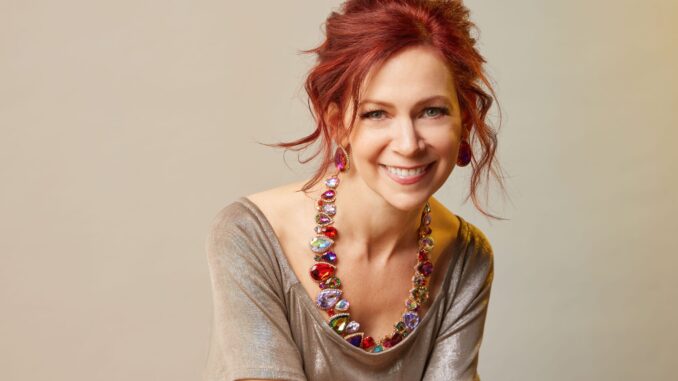
The Unpacking of Elsbeth: What Carrie Preston Reveals in the Depths of Her Many Bags
Elsbeth Tascioni, the eccentric, brilliant lawyer-turned-investigator, is a character whose very essence is a delightful paradox. She is at once disarmingly naive and razor-sharp perceptive, a whirlwind of brightly patterned scarves and an intellect that dissects complex cases with surgical precision. But beyond her distinctive sartorial choices and her peculiar way of circling a truth, there is one consistent, enduring visual anchor to her character: her bags. Not a bag, but many bags – an ever-shifting, often overflowing collection that seems to be a physical manifestation of her own wonderfully cluttered, brilliant mind. And when Carrie Preston, the actress who breathes such vibrant life into Elsbeth, offers a glimpse into what those bags might contain, it’s not just a prop revelation; it’s an illustrative unpacking of Elsbeth’s very soul.
To understand the significance of Elsbeth’s bags is to understand Elsbeth herself. They are not mere accessories; they are extensions of her operating system. Each bag, whether it’s a brightly embroidered tote, a slightly misshapen satchel, or a vintage carpet bag, hints at a life lived on the go, perpetually ready for the unexpected. They suggest a preparedness that defies conventional logic, a collection of items that might seem random to an outsider but, to Elsbeth, undoubtedly possess a unique and profound utility. She doesn’t carry a briefcase; she carries a treasure chest of the peculiar and the potent, a mobile workshop for her unconventional genius.
When Carrie Preston reveals what might be nestled within these mysterious receptacles, she’s not just listing props; she’s articulating the carefully curated chaos that defines Elsbeth. Imagine Preston, with that knowing smile that perfectly mirrors Elsbeth’s own, pulling out items that would surprise and delight. She might describe finding a half-eaten bag of artisanal licorice (for sudden sugar boosts during late-night deductions), a tiny, dog-eared copy of a philosophy text (for moments of existential pondering or an unexpected legal precedent), or perhaps a pair of opera glasses (for subtle, long-distance observation of suspects in a crowded room).
But the true illustrative power comes in the more idiosyncratic items. Preston might reveal a small, brightly colored slinky, not as a toy, but as a fidget tool that helps Elsbeth focus during intense questioning, its rhythmic motion a silent counterpoint to the clamor of her thoughts. Or perhaps a collection of exotic tea bags, each chosen for its specific calming or invigorating properties, a personal ritual for resetting her mental compass. There might be a travel-sized sketchpad and a set of colored pencils, not for artistic pursuits, but for diagramming complex relationships or visually mapping out alibis, a technique that allows her non-linear brain to process information.
These aren’t just random items; they are clues to Elsbeth’s methodology. The bubbles she might carry, as Preston might suggest, aren’t for childish amusement, but perhaps as a means to disarm, to create a moment of unexpected wonder that lowers a suspect’s guard, making them more pliable to her probing questions. The collection of miniature rubber ducks or tiny plastic animals – perhaps not for a child, but as stand-ins on a small desk, representing key players in a case, allowing her to physically manipulate and visualize their movements and motivations.
What Carrie Preston’s insights truly underscore is the deliberate construction of a character who appears to operate on whimsy but is, in fact, incredibly intentional. The bags are Elsbeth’s external hard drive, her psychological comfort blanket, and her arsenal. They are a tangible representation of her ability to find connections where others see none, to extract the extraordinary from the mundane, and to approach every situation with an open mind and a readiness for anything.
In Elsbeth’s many bags, revealed through the insightful lens of Carrie Preston, we don’t just see a collection of objects. We see the carefully considered tools of a brilliant mind, a reflection of her unique approach to life and justice, and an invitation into the delightful, disarming world of a character who proves that sometimes, the most profound wisdom can be found amidst the most charmingly chaotic clutter. They are, in essence, the very map of Elsbeth’s inimitable self.
